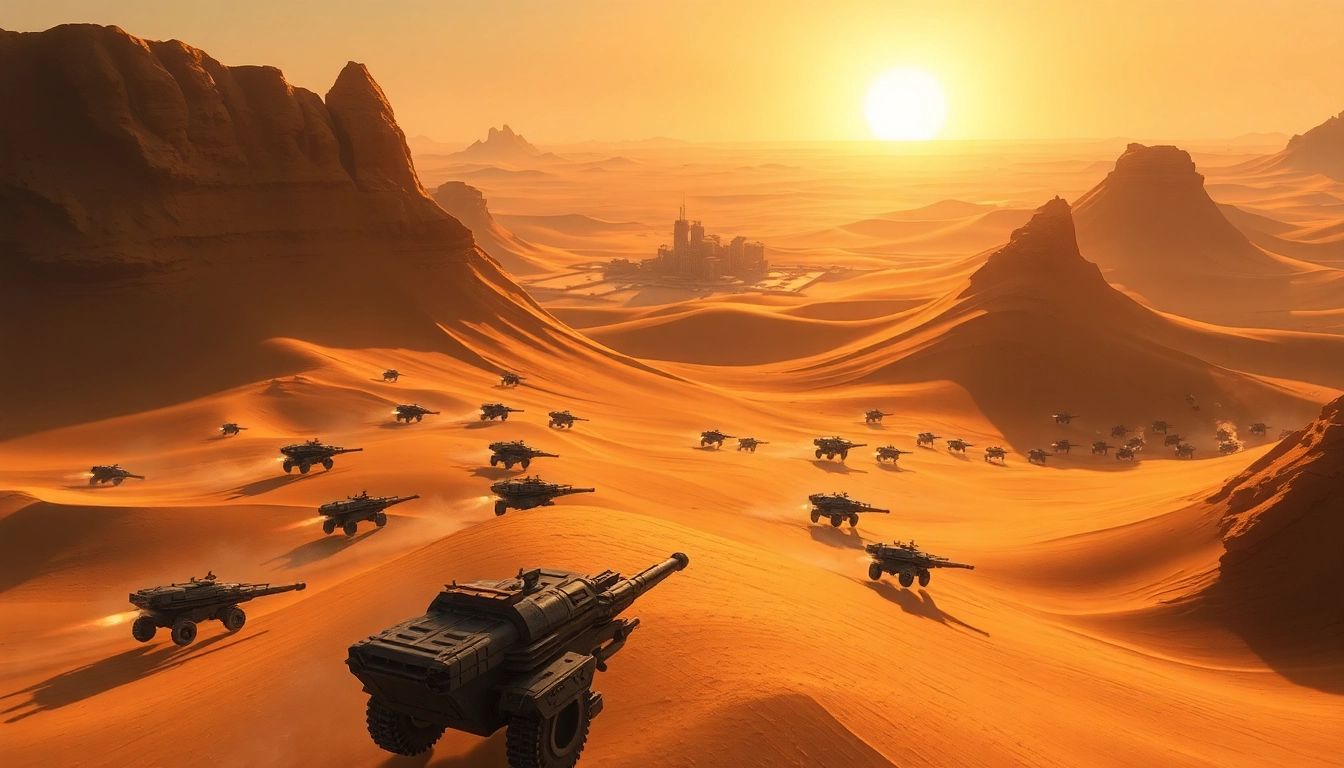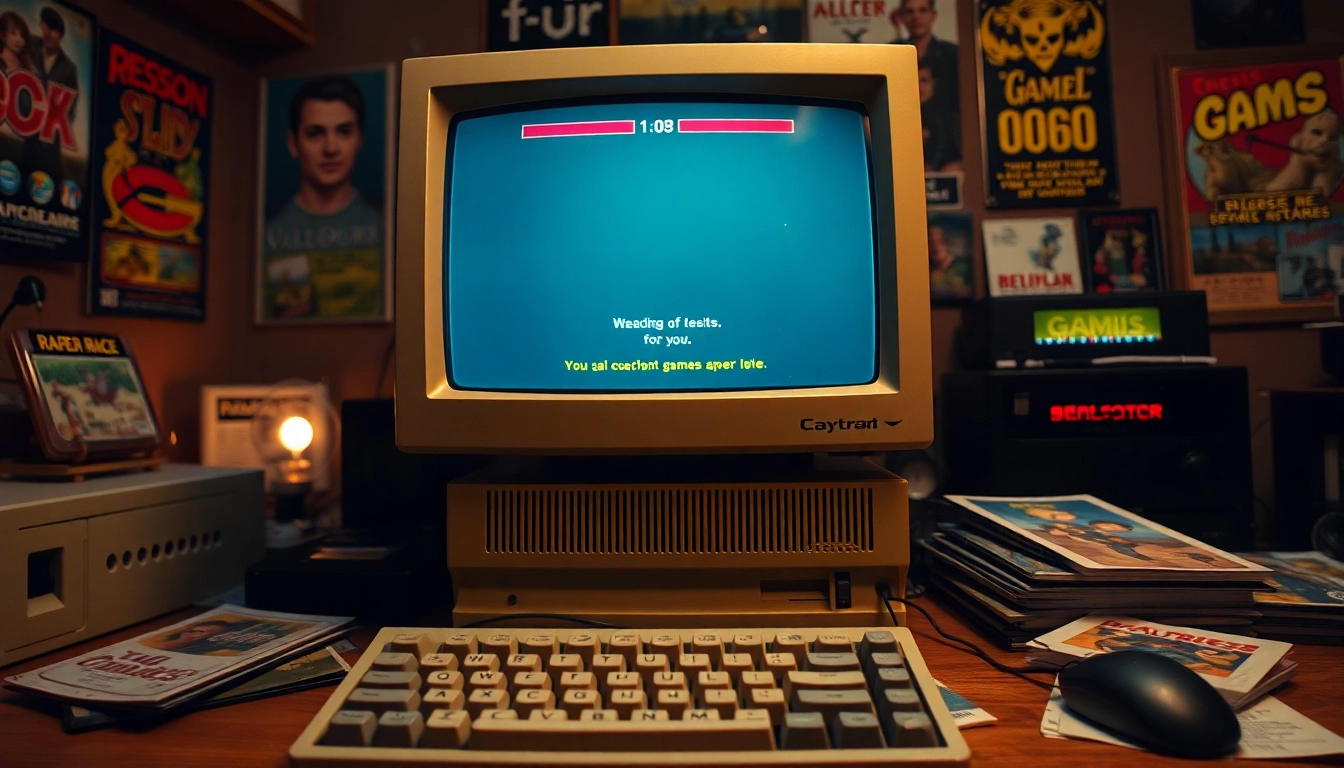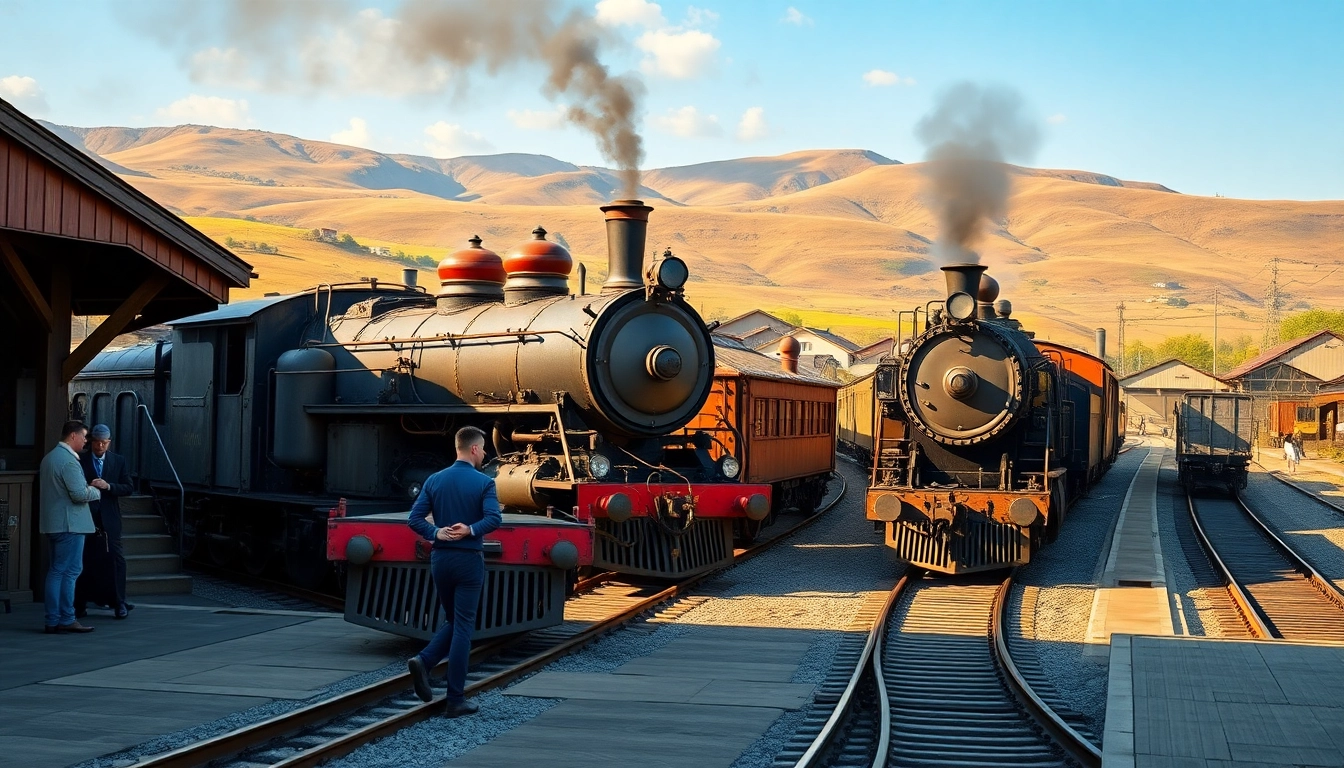Introduction to the Dune 2 Game
Released in 1992, the dune 2 game is a seminal title in the realm of video gaming, renowned for establishing many conventions that would become staples in the real-time strategy (RTS) genre. Developed by the innovative Westwood Studios and published by Virgin Games, it is an extension of the Dune universe originally created by Frank Herbert and enhances the strategic gameplay elements seen in its predecessor, Dune, released earlier the same year.
What is the Dune 2 Game?
Dune II: The Building of a Dynasty, known colloquially as Dune 2, is an RTS game that emphasizes the need for strategic resource management, base building, and unit deployment. Players take on the role of one of three distinct factions vying for control of the desert planet, Arrakis, also known as Dune, where the valuable substance “spice” can be harvested. The game’s mechanics hinge on balancing resource collection, troop movements, and tactical warfare, which laid the groundwork for future RTS games like Command & Conquer and Age of Empires.
Historical Context and Its Impact on Strategy Gaming
The release of Dune 2 marked a pivotal moment in gaming history. Prior to its launch, real-time strategies were not as prevalent or defined as they are today. Dune 2 introduced many gameplay elements that would be universally adopted in subsequent titles: the construction of bases, the gathering of resources, and the direct control of units in real time. The success of Dune 2 solidified the RTS genre’s place in gaming lore and inspired a generation of developers to create complex strategic games.
Overview of Gameplay Mechanics in Dune 2 Game
In Dune 2, players choose between three factions: the noble Atreides, the brutal Harkonnen, and the enigmatic Ordos. Each faction possesses unique characteristics and units, influencing gameplay strategy. Players must construct buildings to produce units and harvest spice, which serves as the primary resource for funding their military campaigns. The mechanics of unit production, movement, and combat are real-time, meaning players must continuously adapt their strategies to shifting battlefield conditions.
Key Features of Dune 2 Game
Gameplay Elements and Objectives
The primary objective in Dune 2 is to defeat rivals and control the spice production on Arrakis. Each mission includes specific objectives like destroying an enemy base or protecting spice mines, and players advance through various levels that simulate the harsh landscape of Dune. Players must strategically construct their bases and position units to both defend against enemy attacks and disrupt enemy operations.
Unique Factions and Characters
The three distinct factions of Dune 2 add depth to the gameplay experience. The Atreides focus on tactical warfare with dynamic units that emphasize speed and stealth. The Harkonnen, on the other hand, are characterized by their brute strength and powerful firepower, ideal for aggressive strategies. The Ordos utilize advanced technology and unconventional tactics, encouraging players to experiment with different approaches to victory. Each faction’s strengths and weaknesses require players to adapt their strategies based on their chosen side.
Strategies for Resource Management
Effective resource management is crucial in Dune 2. Spice is the primary resource and is vital for building units and structures. Players need to carefully manage their harvesting operations by positioning their harvesters strategically, protecting them from Sandworms, and maximizing efficiency. Creating a balanced economy between unit production and resource collection is essential for success, as neglecting either side can lead to disaster on the battlefield.
Gameplay Tips for Dune 2 Game
Effective Unit Deployment and Combat Tactics
Unit deployment is fundamental in Dune 2. Players should focus on building a diverse army that includes infantry, vehicles, and specialized units. Utilizing terrain to your advantage is key; high ground can provide tactical benefits, while clever use of cover can protect vulnerable units. Additionally, flanking and coordinated attacks can catch opponents off guard, leading to significant battlefield advantages.
Building Structures and Technologies
Constructing the right buildings is vital for sustaining production and advancing technology. Players should prioritize building structures that complement their strategic styles, such as factories for unit production or tech centers for upgrades. Keeping an eye on enemy movements while expanding the base can prevent sabotage and ensure a steady supply of resources for military engagements.
Maximizing Spice Harvesting
Maximizing spice harvesting requires strategic planning and quick reflexes. Players must balance their harvesters between gathering spice quickly and protecting them from enemies and Sandworms. Setting up defensive perimeters around spice fields can safeguard resources while allowing for efficient collection. Adapting to the game environment—such as knowing where Sandworms tend to spawn—can also enhance harvesting success.
Cultivating a Community Around Dune 2 Game
Engaging with Fans and Online Forums
The Dune 2 fan community remains vibrant decades after its release. Engaging with fellow fans through online forums provides opportunities to share strategies, troubleshoot challenges, and discuss gameplay experiences. Websites dedicated to classic gaming often have sections for Dune 2, where players can explore content ranging from fan theories to gameplay videos. Communicating with other players fosters a sense of community and enriches the overall experience.
Sharing Strategies and Gameplay Experiences
Sharing strategies via blogs, videos, or live streams enables players to tap into the collective knowledge of the community. Documenting gameplay experiences can help others who are struggling and can also attract new players to the iconic game. Through platforms like Discord or Twitch, fans of Dune 2 can collaborate and enhance their gaming skills, while also celebrating the title’s legacy.
Participating in Dune 2 Game Events
Many communities organize events centered around Dune 2, from tournaments to casual gaming nights. Participating in these events not only provides competitive experiences but also fosters friendships among players. Many online forums announce these events, creating a lively atmosphere where new and veteran players can connect and share their passion for the game.
The Legacy of Dune 2 Game in Modern Gaming
Inspiration for Contemporary Strategy Games
Dune 2 left an indelible mark on the strategy gaming landscape. Many contemporary titles cite it as a direct influence, borrowing mechanics regarding resource management, base building, and real-time combat. The genre grew rapidly after Dune 2’s success, with many new games evolving the concepts introduced in this seminal game. Its design philosophy continues to resonate in games that prioritize tactical speed and strategic depth.
Revival and Remakes of Dune 2 Game
Interest in Dune 2 has led to several unofficial remakes and adaptations over the years, showcasing the game’s lasting appeal. Modern technology allows for improved graphics, interface enhancements, and new gameplay elements, enticing long-time fans and newcomers alike. These remakes honor the original while inviting further exploration of its mechanics, ensuring that Dune 2 remains relevant in today’s gaming world.
Continued Influence on Game Design
The design principles introduced by Dune 2 still inform the development of strategy games today. The importance of resource management, unit diversity, and real-time decision-making found in Dune 2 continues to shape how new games are developed. As game designers analyze and adapt classic mechanics, the legacy of Dune 2 persists, influencing the creativity and innovation of future titles in the genre.



